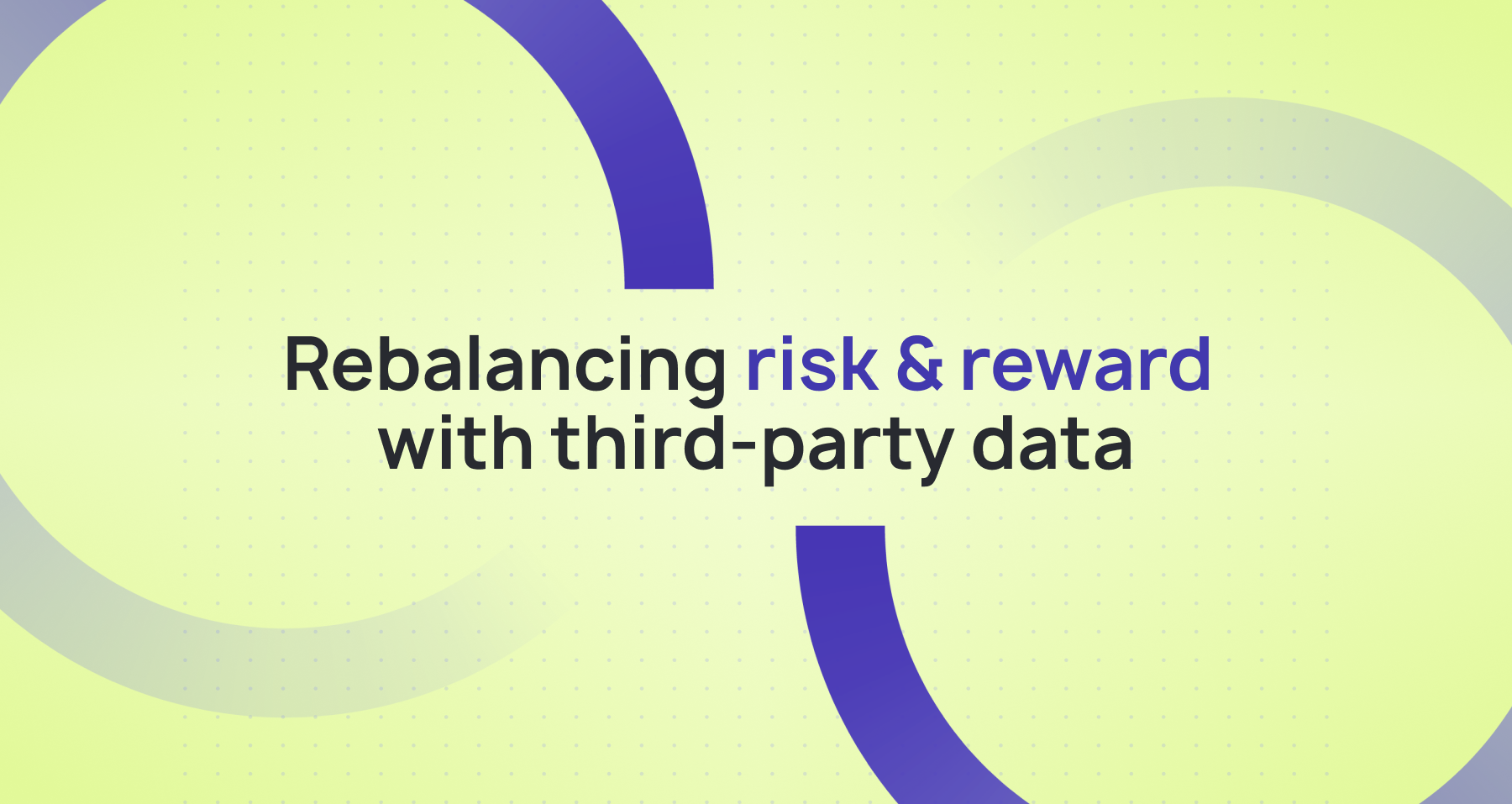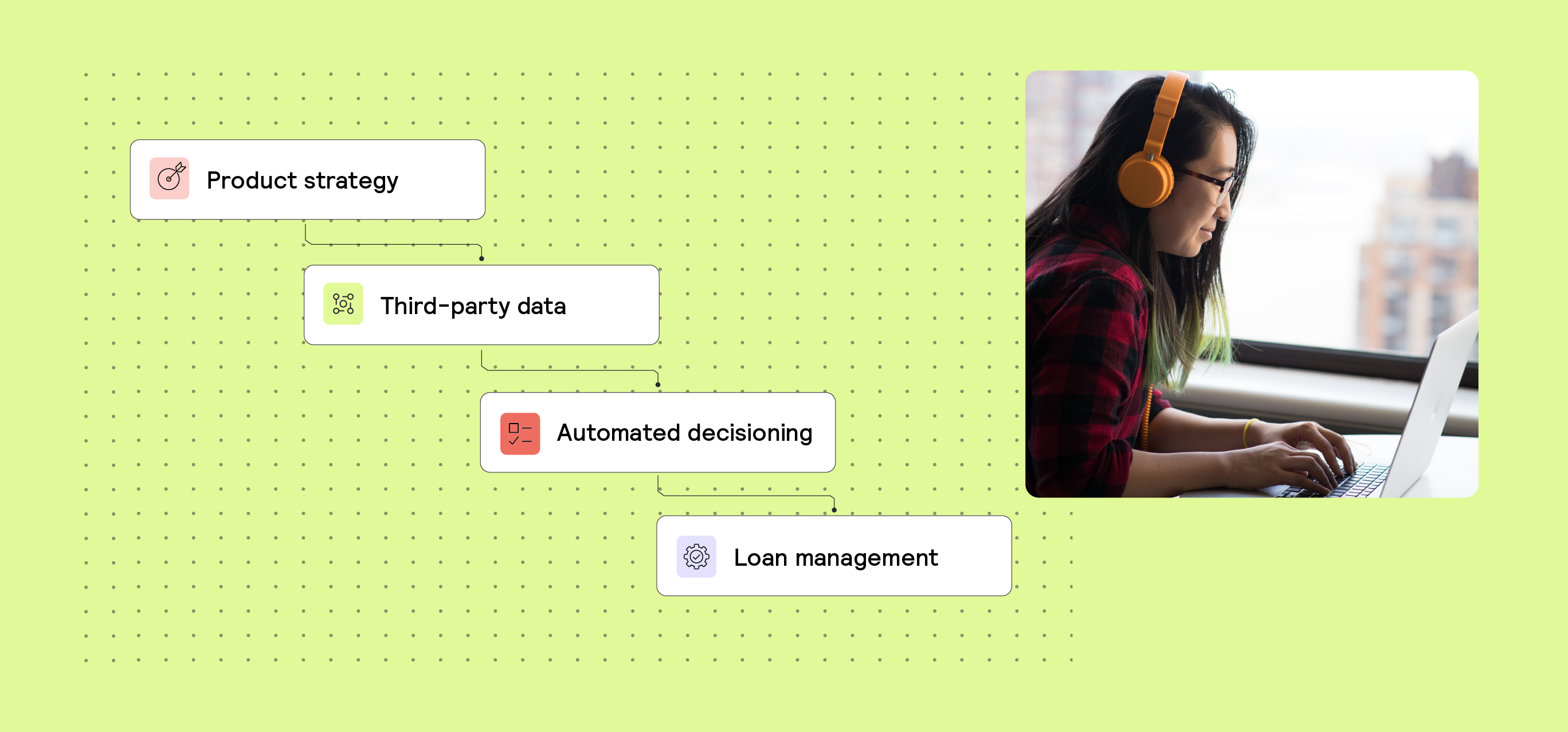
In the rapidly evolving landscape of financial services, one thing has become clear: data-driven product innovation is no longer a luxury—it’s a necessity. But innovation alone is not enough.
Teams working with financial products today face a new challenge: The need to continuously recalibrate the balance between risk and reward as customer needs, behaviors, and regulatory environments shift. And it is with this delicate balancing act that fintech companies distinguish themselves as market leaders.
This article highlights the critical role third-party data plays in rebalancing risk and reward and why those who can seamlessly integrate new data sources into their risk and product strategies are not only mitigating risk better but also unlocking new opportunities for growth.
Key takeaways
- Continuously rebalancing risk and reward is key to staying competitive with financial products; adapting to changing customer behaviors and market shifts quickly helps maintain a strong market position.
- Data-driven decision-making drives growth and mitigates risk; fintech teams that leverage internal and external data sources effectively can spot opportunities faster and make more informed decisions.
- Seamless access to third-party data enables agility; quick integration of new data sources gives companies a competitive advantage, allowing for faster innovation and improved risk management.
The importance of rebalancing risk and reward
At the core of every financial product lies a natural tension between innovation and risk. Product teams are incentivized to drive product innovation, whether by optimizing existing products, expanding into new markets, or cross-selling new offerings to current customers. Meanwhile, risk and compliance teams must focus on managing a product's existing risk exposure and ensuring that any new initiatives do not introduce unexpected additional risks.
This balancing act between risk and reward within a company must be an ongoing process. As product strategies evolve, so must the risk strategies that support them. By continuously aligning product and risk teams through a "better together" approach, companies can enhance business outcomes while remaining agile in the face of market shifts.
For all teams, the key to mastering this balance often lies in harnessing the power of third-party data. Data-driven insights empower teams to make smarter, more precise decisions—whether it's assessing credit risk in underwriting, improving onboarding accuracy, or identifying potential fraud. By leveraging the right data, teams can drive growth while effectively managing the risks associated with product expansion and optimization.
Using third-party data to mitigate risk and accelerate growth
As new third-party data sources emerge and AI and machine learning models evolve, product and risk teams have the opportunity to continuously adjust the risk-return balance of their offerings by gaining valuable insights into customer behaviors that indicate creditworthiness, fraud risk, and more.
"There is no more “set it and forget it” when it comes to decision workflows in financial services. Not only are new sources of data continuously emerging, but user behaviors and the threats posed by bad actors are constantly evolving,"
For instance, integrating a new fraud prevention solution like Socure could reduce your compliance team's manual overhead and improve the accuracy of onboarding assessments. The same solution could also lower application drop-off rates, boost conversion, and improve the overall customer experience.
However, simply connecting to third-party data providers isn’t enough to reap the full benefits of new insights—speed is crucial. Product and risk teams need the ability to integrate with new providers without getting bogged down by the technical side of implementation.
Why seamless access to third-party data is key to success
In fintech, the ability to quickly access and integrate third-party data is not just a nice-to-have—it is essential for staying competitive in a rapidly shifting landscape.
By leveraging next-generation decision platforms that facilitate seamless third-party data integration, non-technical teams can move with speed by reducing their reliance on engineering resources for integrations. This reduces integration timelines from months to weeks, and allows for quicker iterations and frequent updates to both risk and product strategies, creating a competitive edge.
“Access to third-party data should no longer a bottleneck for those working with financial products today. Platforms like Taktile enable business teams to instantly connect to and experiment with new data sources, allowing them to make real-time adjustments to their products that reduce risk and drive growth,”
Going forward, the products that succeed will be those where teams treat data as a dynamic resource, continuously refining their approaches as new information emerges.
“To grow responsibly and profitably means continually evaluating opportunities to improve the inputs (data) and processes in order to drive better results.”
To learn more about how your team can rebalance risk and reward using third-party data, download our complete guide: Rebalancing Risk & Reward: The Ultimate Guide to Leveraging Third-Party Data in Fintech Decisions.
Frequently Asked Questions (FAQs)
Q: Why is rebalancing risk and reward important in financial services?
A: Financial products must evolve with changing customer behaviors, regulations, and fraud risks. Continuously the rebalancing risk and reward dynamics of financial offerings helps banks and fintech companies stay competitive while protecting against losses.
Q: How does third-party data improve financial risk management?
A: Third-party data sources such as credit insights and behavioral analytics give risk teams deeper visibility into customer behavior. This enables smarter, faster decisions that reduce unforseen risk exposure without slowing growth.
Q: What role does third-party data play in accelerating product innovation?
A: With real-time access to external data, product teams can experiment faster, refine customer onboarding, and identify new growth opportunities while maintaining compliance. This agility drives both innovation and risk control.
Q: What are the benefits of pre-built third-party data integrations?
A: Pre-built integrations to crucial third-party data providers through decision platforms such as Taktile, eliminates long integration cycles. This means faster testing, real-time adjustments, and less reliance on engineering teams, allowing banks and fintech companies to move quickly in dynamic markets.
Q: How can teams get started with integrating new third-party data sources?
A: Adopting a modern decision platform such as Taktile makes it easy for product and risk teams to connect with providers, test new data sources, and continuously refine their risk management strategies. Request a demo of Taktile to see it in action.






